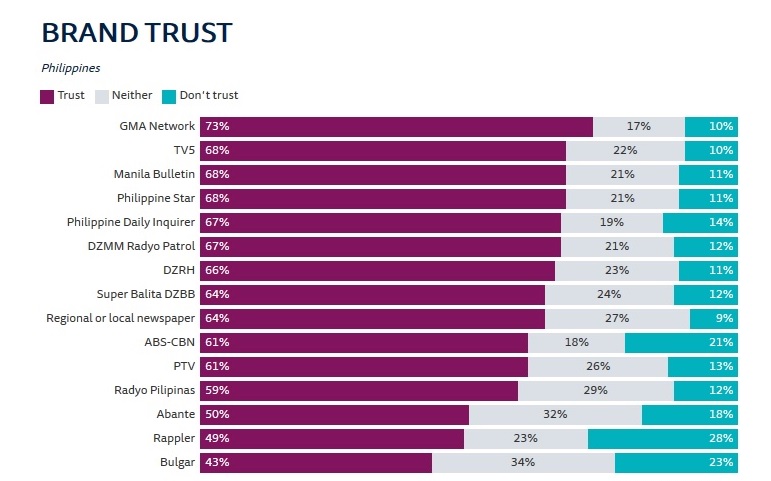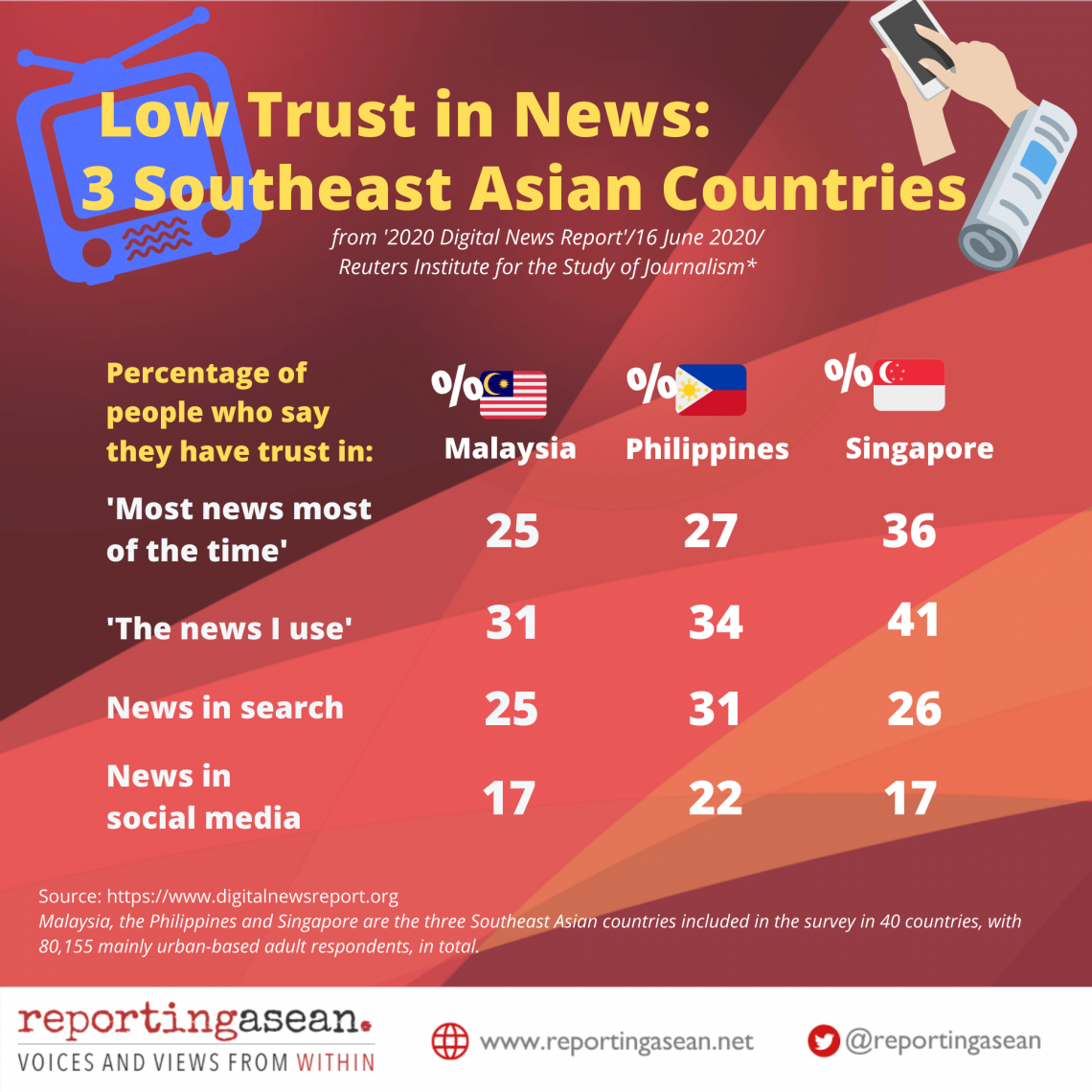
In one of the forums where pressure on media was discussed, the respected Luis Teodoro of the Center Media Freedom and Responsibility said the best protection for media is the people’s trust
In principle, people’s trust on media should be a given because media’s role is public service – to give the public information , as truthfully as it can- that will empower them to make decisions in the daily life including on matters of national interest.
The reality, however, is not that simple. That’s why we have a situation where media becomes a target of attacks from the government as well as other powerful forces.
The Philippine profile on media shown in the 2020 Digital News Report based on a survey sponsored by the Reuters Institute for the Study of Journalism (RISJ) at Oxford University affirms what we are seeing and feeling on the ground.
Written by Yvonne Chua of the UP College of Mass Communication, the Philippine 2020 Digital News Report showed that interest in news and belief in the importance of independent journalism run high in the Philippines but are accompanied by a low trust in news and high levels of concern over misinformation.
The survey showed popularity does not automatically translate to trust.
The most popular sources of news are ABS-CBN accessed by 61 percent of the respondents offline and by 54 percent online followed by GMA Network accessed by 53 percent offline and 47 percent online.
Far third is Philippine Daily Inquirer, used by 35 percent of the respondents both offline and online. Coming in close are digital news site Rappler online (31 percent) and The Philippine Star offline (30 percent).
The decline in the trust on media is not only in the Philippines. The study showed “Across all 40 markets, less than four in ten (38 percent) said they trust ‘most news most of the time’ – a fall of four percentage points from 2019. Less than half (46 percent) said they trust the news they use themselves while trust in search (32 percent) and social media (22percent) is even lower. Notable changes over the last 12 months include a 16-percentage point fall in Hong Kong (30 percent) following violent street protests and a 15-percentage point fall in Chile (30 percent), which has seen regular demonstrations about societal inequality. In the UK trust has fallen 12 percentage points (28 percent), following a divisive election where many on the left blamed the media at least in part for their defeat.
“Political polarisation linked to rising uncertainty seems to have undermined trust in public broadcasters in particular, which are losing support from political partisans from both the right and the left.
“Subsequent polling for the Reuters Institute shows that the COVID-19 crisis did temporarily increase trust levels in the news media in the early stages of lockdown, though this has fallen almost as quickly as the media has stepped up its criticism of government and official handling of the pandemic.
“Despite this, the majority (60 percent) say that they still prefer news that has no particular point of view and that only a minority (28 percent) prefer news that shares or reinforces their views. This preference for neutral news is strongest in countries like Germany, Japan, the UK, and Denmark – all countries with strong and independent public broadcasters. Partisan preferences have slightly increased in the United States since we last asked this question in 2013 but even here a silent majority seems to be looking for news that at least tries to be objective. “
The survey conducted in January and February 2020 with updates up to April covered 40 countries with a total of 80,155 respondents (2,000 per country). It also covered TV, Radio, print and online media.
The views in this commentary are those of the author and do not necessarily reflect the views of VERA Files.
